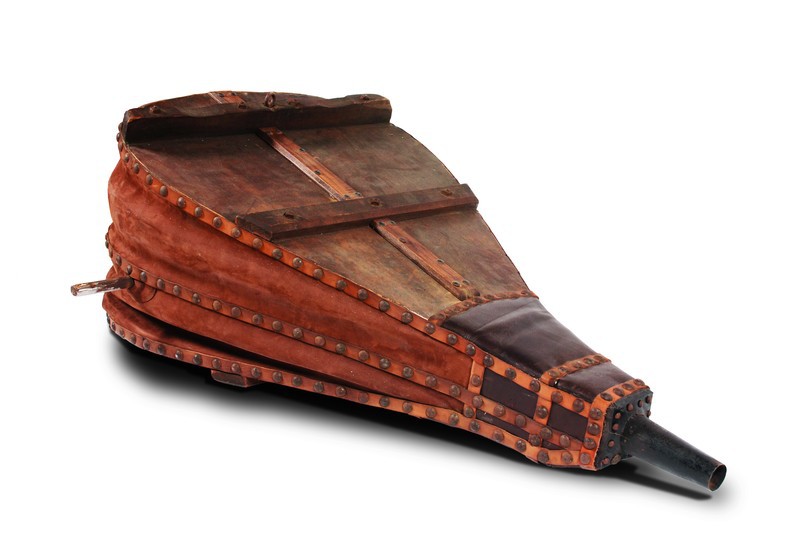
Mission
The MOT’s aim is to help understanding of the past and present of humanity, here and elsewhere, by giving a realistic picture of the origin and evolution of techniques and of their impact on everyday life and on the environment.
The underlying vision
Past and present
The MOT studies ‘older’ techniques, that is to say, not only the techniques of the past, but also those of today. Man is continually thinking up new tools. The latest form of tools also have their place in our collection, which is unique in that respect.
Here and elsewhere
The Museum wants to study the techniques not only of this region, this country, or this culture. We deliberately work at an international and intercultural level to be able to give a global picture of the wealth of techniques in different cultures. By learning to know, compare and understand the techniques of others, we help to put cultural differences in relation to each other.
The techniques
Like some other institutions, the MOT has the task of improving understanding of the past. But the MOT does this by giving a picture of what we call our technical past.
If we want to understand the past, we cannot do so without studying techniques. Techniques are necessary for virtually all human activities. This can go from the provision of basic needs, since there would be no food without the techniques, for example, of hunting or agriculture, to the higher expressions of art, since there can be no art of painting without the technique of, for instance, preparing paint. Techniques are an essential element of our society and so it is of fundamental importance to learn to know their history.
That is why the MOT tells the history of techniques. That is why we try in the first instance to give a picture of how people used to work and deal with the technical aspects of their daily life.
Because the history of techniques as a subject is a very large one, we keep to a clear definition. The MOT concentrates on ‘naturally powered’ techniques; in other words, techniques driven by muscle power (of man or beast), water power, or wind power.
The naturally powered techniques are:
- historically of fundamental importance,
- also relevant today for us in the context of saving energy, cross-culturalism etc., and we should not forget that world-wide animals are still the most common source of traction power in agriculture,
- as a subject suitable for many target groups: multiple approaches and themes are possible’,
- as a subject very accessible and appropriate for reaching new, vulnerable, target groups.
The MOT’s approach is unique in this country, because we do not choose a single technique or a single period. This makes it possible to transcend geographic, historical or cultural boundaries. By deliberately choosing natural power sources we are as a museum and scientific institution complementary to the various institutions studying industrial archaeology.
A realistic picture
The MOT throws light on the history of techniques from a technical aspect and not only from a historic or socio-economic point of view. We opt for this approach because without a basic technical understanding you can never understand specific events of our past or assess their influence correctly. The invention of the wheelbarrow in the Middle Ages, for example, only has significance if you understand the fundamental distinction between that vehicle and its predecessor, the stretcher.
So it is not enough to know when and how a technique originated, nor in what ways it evolved further. What we need to know is the importance that a specific technique has for mankind, particularly the material consequences of it on their life and the impact of it on their environment.
Daily life
The MOT studies not only crafts and so-called technical occupations. Techniques are also used in daily life, for instance, in housekeeping. It is precisely through their presence here that techniques have such a profound influence on the way of life and quality of life of people.
Environment
As people we develop and use specific technical means and that makes us directly responsible for the impact of the techniques on our environment.
The use of natural power as a source of renewable energy is today a burning issue. In response to climate change there is again massive interest in sustainable energy. But this is nothing new under the sun, it has been in existence for millennia. Until roughly around 1800 muscles (our own or those of beasts), windmills and watermills were the only sources of energy.
It is certainly true that we can learn a great deal from the past with which to face the challenges of the future. We must make use of the renewed interest in older techniques to promote the relevance and actuality of our subject.
Helping to understand
The MOT wants to help understanding man’s past and present. To reach that objective the Museum wants to put out specific messages. The data which we offer the public are made ‘legible’ by us by interpreting them and putting them in a specific context. The story we tell can be read at several levels:
- The first level
We want to sketch a realistic picture of the material life and the technical past of man; - The second level
The MOT wants to raise questions and inspire the visitor to think. We don’t just want to show him how someone did something in the past. We want to create the context in which you ask yourself the question: ‘Why did he or she do that in this way and what were the results?’; - The third level
We hope with these questions to help develop attitudes. The history of the techniques can in connection with our contemporary world help us to think, offer solutions and teach us to put them into perspective.